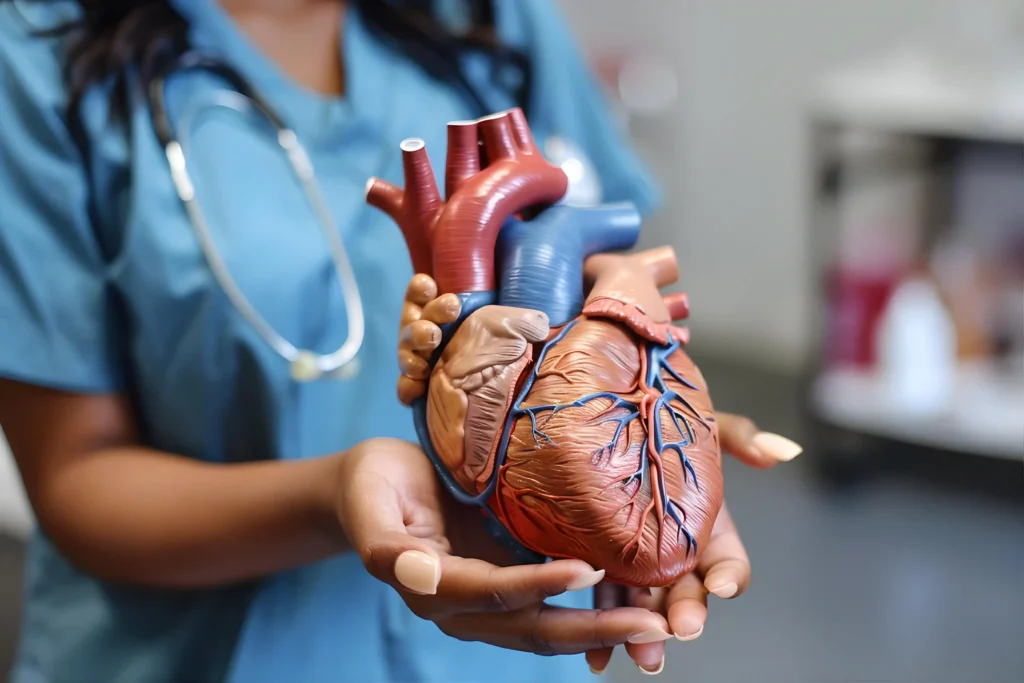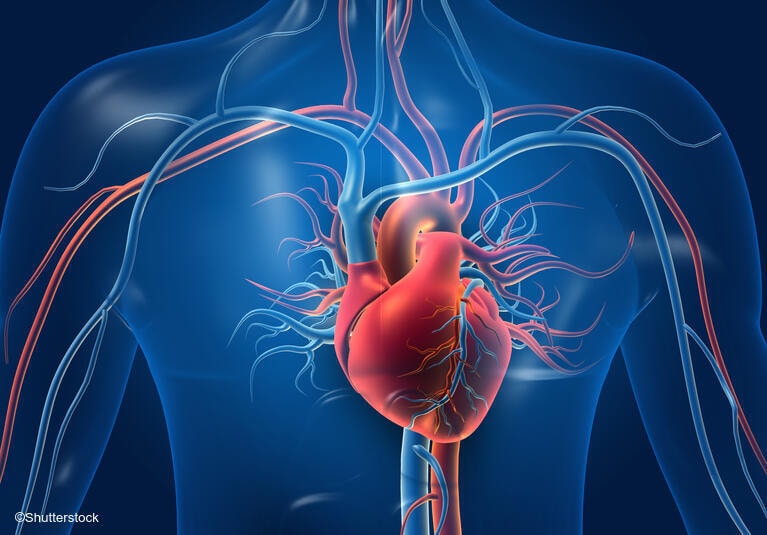What to do after your Cardiologist near me appointment
Wiki Article
Comprehending the Value of Cardiology in Modern Healthcare Services
Cardiology plays an important duty in modern healthcare, especially as cardiovascular disease remains to be the leading reason for death worldwide. Advancements in diagnostics and treatment have transformed patient care, enabling earlier interventions and improved outcomes. In addition, the change towards precautionary cardiology encourages people to manage their wellness proactively. As modern technology remains to progress, the assimilation of cutting-edge solutions might even more redefine cardiology's influence on public health, prompting a closer exam of arising patterns and their implications.The Frequency of Cardiovascular Disease and Its Effect on Public Health And Wellness
Heart condition remains the leading cause of death worldwide, its influence prolongs far past individual people to affect public wellness systems and economic climates. The high prevalence of heart condition places a significant pressure on healthcare resources, necessitating boosted funding for prevention, rehabilitation, and therapy programs. Public health and wellness initiatives need to address danger variables such as weight problems, smoking cigarettes, and sedentary way of lives, which add greatly to the increasing occurrence of heart conditions.Moreover, the financial concern related to heart problem is immense, including not just straight medical costs however additionally indirect expenses associated to shed productivity and premature death. Communities face difficulties in taking care of these prices, frequently resulting in variations in health care gain access to and end results. As the population ages and lifestyle-related risks continue to intensify, the seriousness for reliable cardiology treatments ends up being critical. Dealing with heart illness is not only an issue of private health and wellness however also an important public health top priority.Developments in Heart Diagnostics and Imaging Techniques
Recent innovations in cardiac diagnostics and imaging techniques have reinvented the field of cardiology, improving the capability to check and find heart problem. Techniques such as heart MRI, CT angiography, and echocardiography have come to be progressively advanced, supplying comprehensive pictures of heart frameworks and functions. These methods enable for the early recognition of problems like coronary artery disease, cardiac arrest, and valvular disorders.Moreover, developments in non-invasive diagnostics, such as wearable modern technology and remote surveillance tools, have actually encouraged individuals and healthcare providers. These tools promote real-time monitoring of heart rhythms and other crucial indications, leading to prompt interventions. Furthermore, expert system is being integrated into imaging analysis, boosting accuracy and effectiveness in medical diagnosis.Advancements in Therapy Options for Heart Issues
Current developments in cardiology have actually resulted in substantial advancements in treatment choices for heart disease. These include advanced surgical techniques that improve procedural end results and emerging medications that provide new avenues for treatment. As the area advances, these developments play an essential role in boosting patient care and results.Advanced Surgical Techniques
Technologies in surgical techniques have actually transformed the landscape of cardiology, providing brand-new wish for individuals with heart disease. Minimally invasive procedures, such as catheter-based interventions, have actually greatly minimized recuperation times and medical facility remains. Methods like robotic-assisted surgical treatment enhance precision, permitting doctors to navigate intricate physiological frameworks with higher precision. Additionally, innovations in imaging technology facilitate real-time visualization during procedures, improving outcomes. Transcatheter aortic shutoff replacement (TAVR) exhibits a breakthrough in treating aortic constriction, allowing valve replacement without open-heart surgical procedure. In addition, hybrid methods that combine surgical and catheter-based approaches provide tailored remedies for numerous heart problems. These innovative medical methods not only boost person security but likewise increase therapy choices, emphasizing the crucial function of advancement in modern-day cardiology methods.Arising Drugs and Treatments
As the landscape of cardiology proceeds to advance, arising therapies and drugs play a pivotal role in improving therapy options for heart disease. Advancements such as unique anticoagulants and advanced lipid-lowering agents have actually transformed the management of heart diseases, significantly reducing person morbidity and mortality. Furthermore, the advancement of genetics treatments and regenerative medicine provides appealing opportunities for dealing with problems formerly deemed irreversible. Clinical trials are constantly revealing the efficacy of these therapies, pressing the boundaries of conventional therapies. The combination of electronic health and wellness innovations facilitates individualized medication, allowing for tailored treatment plans based on genetic and way of living elements. Jointly, these improvements highlight the dynamic nature of cardiology, boosting person end results and redefining requirements of care in contemporary medical care.The Duty of Preventive Cardiology in Client Treatment
Preventive cardiology plays a necessary duty in patient care by focusing on the identification of danger factors that add to heart illness. With lifestyle adjustment methods and very early detection strategies, healthcare service providers can successfully decrease the incidence of cardio occasions - Cardiology. This proactive method not just boosts patient results however additionally promotes lasting wellnessDanger Aspect Identification
While heart diseases continue to be a leading root cause of morbidity and death worldwide, efficient danger aspect recognition functions as a cornerstone of precautionary cardiology. Recognizing threat variables such as high blood pressure, hyperlipidemia, household, and diabetic issues history is essential for very early treatment. Medical care professionals use different evaluating methods to review these elements, permitting for tailored safety nets. Additionally, recognizing a patient's way of living choices, such as smoking and physical inactivity, further notifies risk evaluations. This comprehensive analysis enables medical professionals to develop tailored care strategies focused on mitigating dangers. By prioritizing danger aspect recognition, healthcare systems can improve client outcomes and reduce the overall burden of cardio conditions, inevitably adding to improved public health approaches and source allowance.Way Of Life Adjustment Techniques
A wide variety of studies highlights the vital role of way of life alteration techniques in reducing heart disease risk. These approaches incorporate nutritional changes, enhanced exercise, smoking cigarettes cessation, and weight monitoring. By embracing a heart-healthy diet regimen abundant in fruits, vegetables, whole grains, and lean healthy proteins, people can decrease cholesterol levels and high blood pressure. Normal physical activity enhances the heart and enhances total cardio health and wellness. Furthermore, giving up smoking cigarettes greatly reduces the risk of heart problem and boosts healing rates for those with present conditions. Weight management better adds to cardio health by minimizing other risk elements such as diabetes and hypertension. Implementing these lifestyle transforms not only advertises private wellness but also works as a keystone of precautionary cardiology in client care.Very Early Detection Techniques
Way of living adjustments significantly add to minimizing cardiovascular illness threats, but they are most efficient when coupled with very early discovery strategies. Preventative cardiology emphasizes the significance of identifying possible heart problems prior to they rise into significant problems. Techniques such as high blood pressure monitoring, cholesterol screening, and progressed imaging technologies like echocardiograms play crucial duties in evaluating cardio health and wellness. Biomarkers and genetic screening likewise enhance the precision of very early discovery, permitting customized preventative approaches. Routine heart threat evaluations encourage health care providers to step in proactively, possibly protecting against heart attacks and strokes (Cardiology care). By integrating these early detection techniques right into routine care, patients can take advantage of prompt way of living interventions and targeted treatments, inevitably improving outcomes and boosting top the original source quality of lifeIntegrating Modern Technology Into Cardiology Practices
As advancements in modern technology continue to improve various fields, the assimilation of cutting-edge devices and systems right into cardiology methods has become necessary try this website for boosting client treatment and results. Telemedicine systems permit cardiologists to check patients from another location, boosting accessibility to care while reducing the concern on medical care facilities. Wearable devices, such as smartwatches, allow constant heart rate tracking, signaling both physicians and clients to possible concerns in real-time. Additionally, expert system (AI) is being made use of to examine vast amounts of cardiac data, assisting in very early medical diagnosis and tailored therapy plans. Advanced imaging methods, including 3D echocardiography, boost visualization of heart frameworks, causing a lot more specific treatments. Digital health records (EHRs) simplify individual details monitoring, making certain that cardiologists have instant access to essential information. With each other, these technological advancements are changing cardiology, advertising aggressive management and boosted health and wellness outcomes for people with cardio conditions.The Significance of Person Education And Learning and Engagement
Patient education and involvement play a pivotal role in the management of cardiovascular health. By gearing up clients with knowledge about their problems, treatment options, and way of living adjustments, doctor encourage individuals to take an active function in their care. This positive strategy can lead to enhanced adherence to suggested medications, dietary modifications, and exercise programs, inevitably minimizing the risk of complications.Engagement likewise cultivates a strong patient-provider partnership, encouraging open communication and trust. When clients feel notified and involved, they are most likely to voice issues and ask inquiries, which can lead to far better medical end results. Furthermore, instructional sources, such as workshops or electronic platforms, can improve understanding and promote self-management strategies. Overall, prioritizing client education and involvement is vital for improving cardio health, improving lifestyle, and decreasing health care expenses connected with cardiovascular illness.Future Fads in Cardiology and Their Possible Effect

Often Asked Questions
What Lifestyle Changes Can Decrease Heart Disease Danger?
The present concern addresses lifestyle adjustments that can greatly lower cardiovascular disease danger. Cardiology care. Embracing a balanced diet plan, taking part in regular exercise, preserving a healthy and balanced weight, handling tension, and avoiding cigarette can notably boost cardiovascular wellnessExactly How Can I Recognize Very Early Signs of Heart Issues?
Recognizing very early signs of heart issues involves tracking symptoms such as breast discomfort, shortness of breath, exhaustion, and irregular heart beat. Timely understanding of these signs can motivate required clinical assessment and treatment for better results.What Are the Differences In Between Cardiologists and Cardiac Surgeons?
The distinctions between cardiologists and cardiac specialists lie in their duties; cardiologists mostly detect and handle heart disease with non-invasive approaches, while heart surgeons do medical procedures to remedy architectural heart issues. Each plays an important, unique duty.
Exactly how Typically Should I Get My Heart Health Checked?
The regularity of heart health and wellness checks varies based upon specific danger factors. Usually, grownups ought to undertake assessments each to two years, while those with present problems may call for even more constant evaluations as encouraged by healthcare professionals.What Role Does Genetics Play in Heart Problem Risk?
Genes significantly influences heart problem risk, with domestic patterns suggesting acquired conditions. Details genetics can predispose people to hypertension, cholesterol problems, and various other cardiovascular troubles, highlighting the value of hereditary screening in reviewing heart health and wellness. Heart condition remains the leading reason of death internationally, its impact index prolongs much beyond private people to impact public wellness systems and economies. Public health and wellness campaigns must resolve risk variables such as obesity, cigarette smoking, and less active lifestyles, which add considerably to the increasing occurrence of heart conditions.Moreover, the financial burden associated with heart condition is enormous, encompassing not only straight clinical prices but also indirect expenditures associated to shed productivity and premature mortality. Precautionary cardiology plays a crucial role in client care by focusing on the recognition of risk aspects that contribute to heart disease. Fabricated intelligence (AI) and machine knowing are improving diagnostics and individual surveillance, making it possible for very early discovery of heart conditions. The distinctions in between cardiologists and heart surgeons exist in their roles; cardiologists primarily manage and diagnose heart problems via non-invasive approaches, while heart doctors execute medical treatments to remedy structural heart issues.Report this wiki page